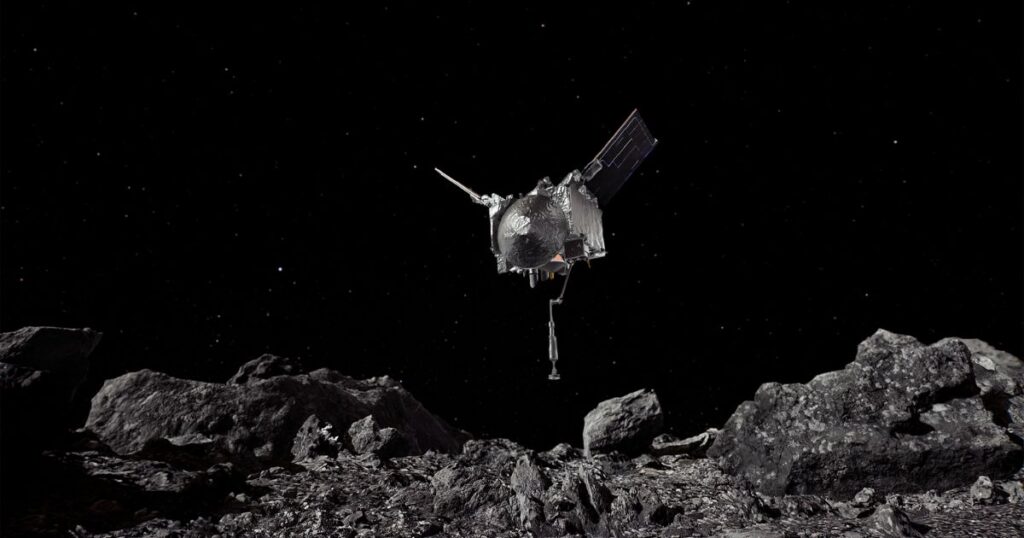An ancient asteroid Bennu, has seen more than 4.5 billion years of history. It was discovered on 11 September 1999, a carbonaceous asteroid in the Apollo group. This ancient asteroid has been a subject of study for scientists. Recent studies by scientists revealed that this asteroid might have been present before the Solar system. A more surprising discovery is it may have brought life and water to Earth.
The old age of this asteroid makes it important to study its properties. It has been present since the early days of our solar system. Scientists believe that asteroid Bennu is over 4.5 billion years old and older than Earth and the Sun. Bennu’s composition provides clues about the early Solar System.
On September 24, 2023, NASA’s OSIRIS-APophis EXplorer delivered an asteroid sample capsule to Earth. Scientists from Curtin University have been studying these samples. OSIRIS-APophis EXplorer mission took seven years to complete. The samples of asteroid Bennu are now being analyzed in laboratories worldwide.
The samples collected from asteroid Bennu are dark particles, some as small as dust, and some are up to 3.5cm long. There are also lighter particles and stones with bright material. These materials form veins and crusts in the samples.
Presence of Hydrated Phyllosilicates & Carbon-rich material
One of the important discoveries is the presence of hydrated phyllosilicates in the sample. Hydrated phyllosilicates form in the presence of water, so it gives strong proof of the presence of water on an asteroid. Water is essential because it is a key ingredient for life.

Along with hydrated phyllosilicates, it also contains carbon-rich material. As you know, Carbon is another essential element for building life. The combination of Carbon and Water suggests that Bennu could have brought the building blocks of life to Earth.
A theory in the origin of life on Earth is called Panspermia. Panspermia theory says that life did not originate on Earth. Instead, it began elsewhere in the universe and was transported to Earth on an asteroid. The combination of water and carbon on Bennu supports this theory that asteroids played a role in delivering life to our planet from elsewhere.
Other findings include the presence of magnesium-sodium phosphates. This finding also supports the claim that Bennu had water on it. Magnesium-sodium phosphates indicate that Bennu experienced chemical environments involving water.
Presolar grains
The presence of Presolar grains on Bennu surprised scientists because these grains existed before the Solar System formed. Presolar grains are made of outflowing and cooling gases from early universe stars. Studying these grains can provide information about the early universe and the solar system’s formation.

A study of asteroid Bennu samples is still ongoing. Scientists using advanced techniques to study samples are looking at the temperature and pressure conditions that Bennu experienced over billions of years. This can tell us about the history and evolution of Bennu.
The findings from Bennu are not just important for understanding the past. But also for studying other asteroids just like Bennu. These findings can be used to develop strategies for asteroid mining. It can also help us prepare for future potential asteroid impacts on Earth.
Continuous research on Bennu samples will continue to reveal new information about the universe’s past and bring us closer to understanding our place in the universe.
Editor’s Recommendations
- CNRS Study Reveals ‘Secret Life’ Before The Big Bang! Mind-Blowing Discovery
- Saturn Rings Disappear by 2025, Will We Ever See Them Again?
- Hubble Space Telescope Spots Early Universe Galaxy 3 Million Light-Years Away
- NASA’s Europa Clipper Spacecraft Prepares for Historic Launch, A New Chapter in the Search for Extraterrestrial Life





